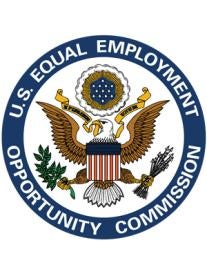The Equal Employment Opportunity Commission has issued its first-ever nationwide procedures on respondent position statements and guidance on effective position statements. These procedures, along with the EEOC’s Digital Charge system, make significant changes in some jurisdictions, while formalizing the existing practices in others.
The procedures state that:
-
Charging Parties will have the ability to review position statements after they are filed;
-
Respondents must identify and maintain confidential information provided as part of position statements;
-
Respondents must provide support for any requested extensions of time to submit position statements; and
-
The substance of position statements must meet certain expectations.
Potential for EEOC to Provide Position Statement to Charging Party
The position statement procedures provide for Respondent position statements and any accompanying non-confidential documentation to be released to a Charging Party upon the request of a Charging Party or his or her representative. The Charging Party then will have the opportunity to submit a rebuttal, which will not be provided to the Respondent.
These procedures will require extra care when relying on confidential information, but the EEOC procedures likely will not affect case outcomes, as similar procedures already have been in place in many state equal employment opportunity agencies as well as the EEOC in some jurisdictions.
Presenting Confidential Information
Under the EEOC’s procedures, when submitting position statements and supporting materials, Respondents must provide any confidential information in separate attachments labeled, as applicable, “Sensitive Medical Information,” “Confidential Commercial Information,” “Confidential Financial Information,” or “Trade Secret Information.” They also must submit an explanation justifying the confidential nature of such information.
The EEOC has advised that it “will not accept blanket or unsupported assertions of confidentiality.” Generally, Respondents now must upload position statements and attachments, both confidential and non-confidential portions, onto the EEOC’s Digital Charge System, instead of faxing or mailing the documents.
For purposes of these procedures, the EEOC already has identified the following as confidential information that should be provided in separately labeled attachments:
-
Sensitive medical information (except for the Charging Party’s medical information, which the EEOC will not treat as confidential information for the purposes of its investigation);
-
Social security numbers;
-
Confidential commercial or confidential financial information;
-
Trade secret information;
-
Non-relevant personally identifiable information of witnesses, comparators or third parties, including dates of birth in non-age cases, home addresses, personal phone numbers and personal email addresses; and
-
Any reference to charges filed against the Respondent by other charging parties.
When reviewing a Respondent’s submission, the EEOC may redact confidential information prior to releasing the submission to the Charging Party.
Given these procedures, position statements should refer only to the attachments containing the confidential information, rather than identify the confidential information with any specificity. In addition, Respondents should consider referring to comparators by pseudonym to protect their privacy. Respondents also should consider taking into consideration the context of the information provided in the event that, despite the use of a pseudonym, the Charging Party might reasonably determine the identity of that individual.
Requesting an Extension of Time
The EEOC advises that it will grant requests for extension of time only when there is evidence that the Respondent is acting diligently to supply the necessary information. The EEOC has identified a partial submission of information related to the allegations in the charge as evidence of due diligence.
A Respondent should submit a written request for an extension of time as early as possible in advance of the due date. The request should detail the reason for the extension and specify the amount of additional time needed to reply. Filing a request for an extension of time does not automatically relieve the Respondent of complying with the deadline.
The EEOC states that if a Respondent does not submit a position statement or respond to its requests for information, the EEOC may proceed directly to a determination on the merits of the charge based on the information at its disposal or subpoena specific information related to the allegations in the charge.
Substance of Position Statement
The EEOC’s guidance on effective position statements provides that position statements should be “clear, concise, complete and responsive,” and, “at a minimum,” should “include specific, factual responses to every allegation of the charge, as well as any other facts” and documentary evidence that the employer deems relevant for consideration. Position statements that simply deny the allegations of the charge likely will be deemed not to meet this standard. The EEOC may conclude the Respondent has no evidence to support its defense if it submits only an advocacy statement without documentation.
The EEOC also advises employers to provide specific categories of information:
-
the number of employees;
-
a staffing or organizational chart;
-
copies of any applicable practices, policies, or procedures;
-
the identities of similarly situated individuals who were and were not similarly affected; and
-
a description of their circumstances.
When deciding what information to include in a position statement, employers should carefully assess the allegations in the case and the relevant information needed to respond on a case-by-case basis. In light of the EEOC’s nationwide procedures, the usual approach to EEOC charge responses (cooperating with the agency to provide no more and no less information than that which is relevant) will be even more important. Respondents should analyze their cases carefully to strike the proper balance in deciding what information to provide.
Digital Charge System
Large employers that receive charges frequently from the EEOC may establish one point of contact for service of digital charges. For employers who have not made such arrangements, the EEOC’s practice is to obtain a Respondent email address from the Charging Party and use that email address for the service of the digital charge. The case-specific password for the Digital Charge System is provided only to the person receiving the charge by email, and is not printed on the charge or any of the associated papers. Thus, if the person receiving the charge does not save the password, the organization will be locked out of the system. Accordingly, whoever receives the charge should preserve the password for later use.






 i
i

